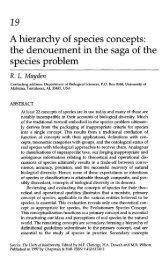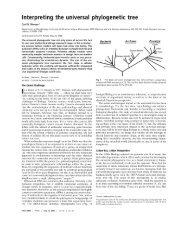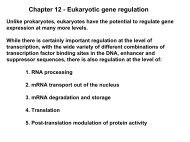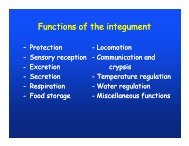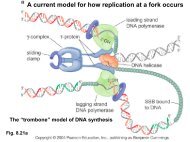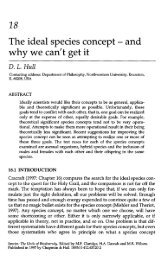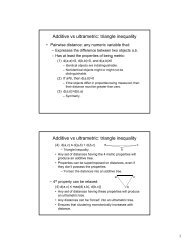3. Basic probability concepts
3. Basic probability concepts
3. Basic probability concepts
You also want an ePaper? Increase the reach of your titles
YUMPU automatically turns print PDFs into web optimized ePapers that Google loves.
(observations or entities) from an infinite population of outcomes that are either ‘heads’ or<br />
‘tails’, in equal proportions.<br />
In estimating probabilities it is useful to classify events as simple or compound. A simple<br />
event cannot be subdivided further into component events, while a compound event comprises<br />
two or more simple events. Whether a particular event is simple or compound may depend on<br />
the purpose or context of the experiment. For a card drawn from a deck, for example, the event<br />
‘diamond’ is simple by this definition, but ‘queen of diamonds’ can be considered to be<br />
compound because the card is both a ‘queen’ (one event) and a ‘diamond’ (second event).<br />
Alternately, ‘queen of diamonds’ might be considered to be simple because it describes one<br />
particular outcome out of 52. Similarly, for an organism sampled from a population, the event<br />
‘female’ is simple, but ‘adult female’ can be considered to be either compound or simple,<br />
depending on context. We will consider this distinction in more detail below.<br />
Sample spaces<br />
The set of all possible outcomes of an experiment is known as the sample space of the<br />
experiment, denoted by S. The simplest sample spaces are those in which the outcomes are<br />
discrete. If the experiment consists of flipping a coin, then S = { H,<br />
T}<br />
, where H means that the<br />
outcome of the toss is a head, and T that it is a tail. If the experiment consists of tossing a die,<br />
then the sample space is S = { 1, 2, 3, 4, 5, 6}<br />
. If the experiment consists of flipping two coins<br />
(either sequentially or simultaneously), the sample space is S = {( H, H) ,( H, T)( , T, H)( , T,<br />
T)<br />
}.<br />
The sample space for throwing two dice is:<br />
( 1,1 ), ( 1, 2 ), ( 1, 3 ), ( 1, 4 ), ( 1, 5 ), ( 1, 6)<br />
( 2,1 ), ( 2, 2 ), ( 2,3 ), ( 2, 4 ), ( 2,5 ), ( 2,6)<br />
( 3,1 ), ( 3, 2 ), ( 3,3 ), ( 3, 4 ), ( 3,5 ), ( 3, 6)<br />
( 4,1 ), ( 4, 2 ), ( 4,3 ), ( 4, 4 ), ( 4,5 ), ( 4,6)<br />
( 5,1 ), ( 5, 2 ), ( 5,3 ), ( 5, 4 ), ( 5,5 ), ( 5,6)<br />
( 6,1 ), ( 6, 2 ), ( 6,3 ), ( 6, 4 ), ( 6,5 ), ( 6,6)<br />
⎧<br />
⎫<br />
⎪<br />
⎪<br />
⎪<br />
⎪<br />
⎪<br />
⎪<br />
S = ⎨ ⎬<br />
⎪<br />
⎪<br />
⎪<br />
⎪<br />
⎪<br />
⎪<br />
⎪⎩<br />
⎪⎭<br />
Similarly, if the experiment consists of forming a diploid condition at a Mendelian locus<br />
with two alleles by sampling and combining two gametes, the sample space of the alleles is<br />
S = A,<br />
A and the sample space of the diploid locus is<br />
{ 1 2}<br />
{( 1, 1) ,( 1, 2) ,( 2, 1) ,( 2,<br />
2)<br />
}<br />
S = A A A A A A A A .<br />
Sample spaces can also be defined for continuous scales. If the experiment consists of<br />
measuring the lifetime of an organism, then there are an infinite number of possible outcomes<br />
S = 0 < time of death



